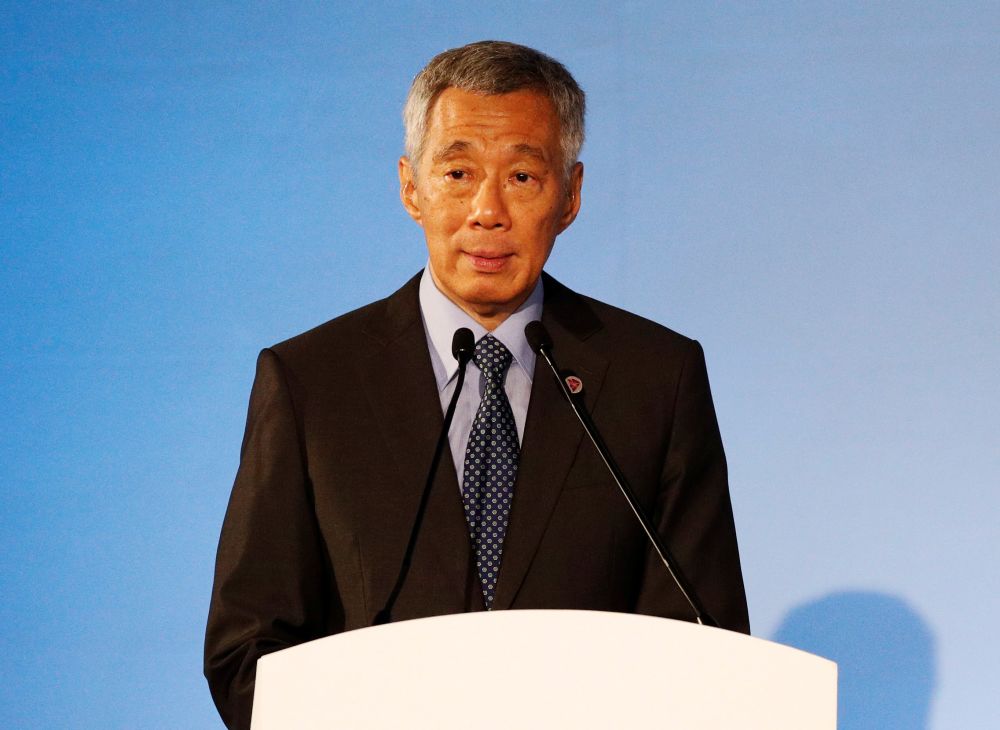HANOI, Sept 12 — With digital technologies transforming the global economy, the Association of Southeast Asian Nations (Asean) is in a “good position” to take advantage of the new opportunities presented by the Fourth Industrial Revolution, Prime Minister Lee Hsien Loong said today.
While reiterating hopes to conclude a highly anticipated trade pact between the grouping and six Asia-Pacific nations by the year’s end, Lee also cautioned that this is not a given.
Speaking at the opening plenary session of the World Economic Forum on Asean in Hanoi, the Prime Minister said Asean’s robust economic fundamentals and commitment to deepen economic integration have put it in good stead to capture opportunities.
He noted that Asean will become the world’s fourth-largest economy by 2030, after the United States, China and the European Union.
It has a young and educated workforce, with six in 10 of the grouping’s 630 million people aged below 35.
“They are comfortable with new technology,” he added.
By 2025, the region’s digital economy is projected to expand to US$200 billion (RM829.7 billion), he said.
The Prime Minister is in the Vietnamese capital for a two-day visit to attend the high-level diplomatic gathering on innovation and entrepreneurship.
The Fourth Industrial Revolution is characterised by a fusion of technologies blurring the lines between the physical, digital and biological spheres. These include artificial intelligence, robotics, drones and autonomous vehicles.
Furthering regional economic integration, Lee said, is an “important condition” to ride the Fourth Industrial Revolution because of the need for network-building, creating new synergies and interconnectedness.
For instance, to allow more seamless operations for businesses across the region, member-states have been working towards the Asean Economic Blueprint 2025.
Other efforts have also been made to tap technology for the benefit of businesses and people in Asean. These include an agreement on e-commerce, which will streamline regulations in this space, so that businesses can market and sell their products with ease regionally.
A Smart Cities Network comprising 26 cities has also been set up to allow cities to join hands and share experiences, under Singapore’s chairmanship of Asean this year.
Next month, the Republic will play host to the Industrial Transformation Asia-Pacific event, the inaugural Asian edition of the world’s largest industrial fair, Hannover Messe. It is set to expose regional firms to the latest industrial technologies.
Turning to multilateralism, Lee said that Asean is working with like-minded partners to strengthen the open and rules-based system, which has been under threat.
“That is why Asean is doing our utmost to make progress on the Regional Comprehensive Economic Partnership (RCEP) and hope to achieve a substantial conclusion… by the end of the year, though this is not yet assured,” he said today.
His remarks on RCEP came just a fortnight after he said negotiations had reached a critical stage and the possibility of a deal was “finally in sight”.
The partnership between Asean’s 10 member-states and Australia, China, India, Japan, New Zealand and South Korea will create the world’s largest trading bloc, covering a third of the world’s present annual gross domestic product.
On bilateral ties with Vietnam, Lee said the seven Vietnam-Singapore industrial parks are faring well, drawing more than US$11 billion in investment capital from 800 global firms and generating more than 200,000 jobs.
Ultimately, the Fourth Industrial Revolution is a “dynamic and continuing process”, and how exactly it will unfold cannot be predicted, said Lee.
“But I am optimistic about Asean’s future,” he added.
“Asean has its own competitive strengths, and by pooling our ideas and resources, and integrating our economies, we will be in a strong position to ride… this fourth wave to bring tangible benefits to our economies and our people.”
Lee returns to Singapore today. — AFP






















